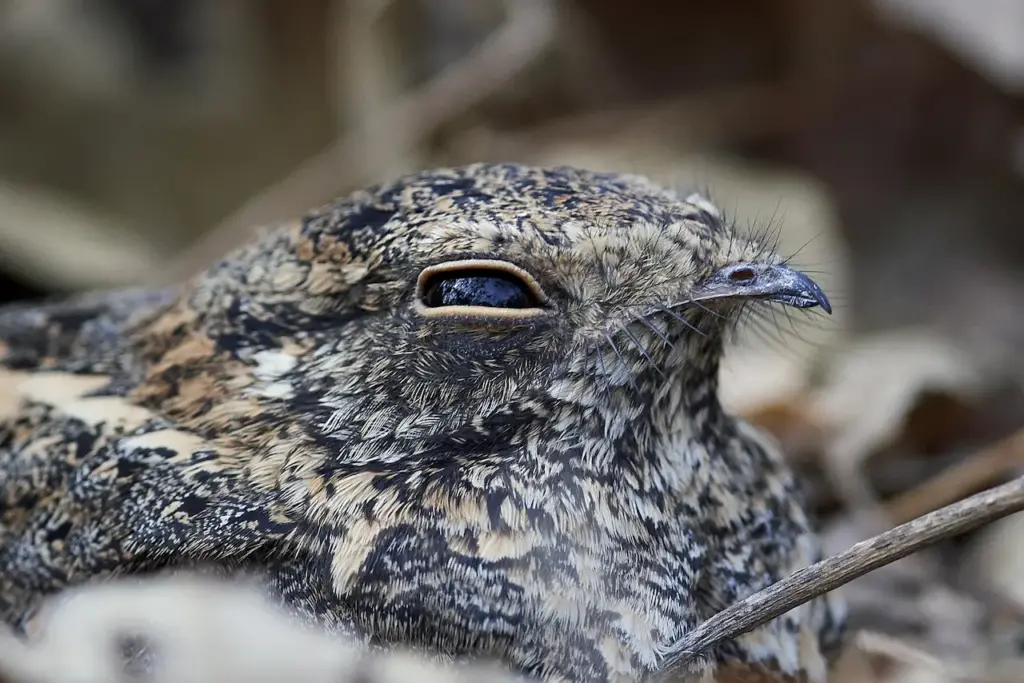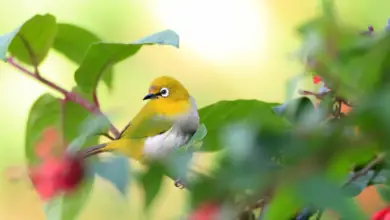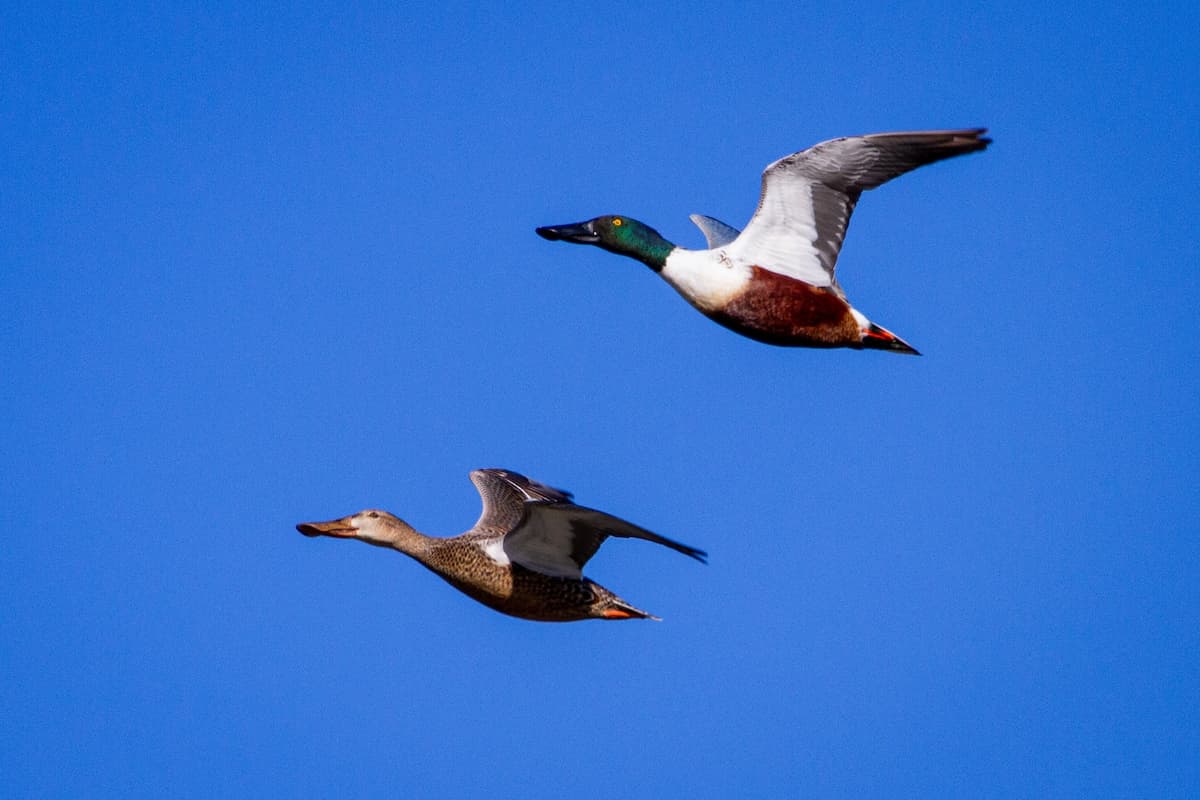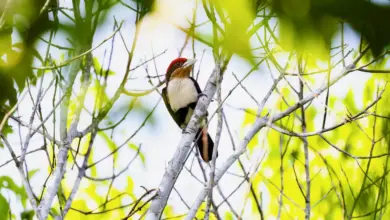The Standard-winged Nightjars (Macrodipteryx longipennis) is an African nightjar that occurs from Senegal east to Ethiopia, where they inhabit dry savannah habitats. It is related to the Pennant-winged Nightjar with which it shares notable similarities in breeding strategies, roosting and feeding habits, as well as vocalizations.

Distribution and habitat
The Standard-winged Nightjars range stretches from the Gambia and western Liberia through central Cameroon and the north to the Democratic Republic of the Congo to southwestern Sudan, south to northern Uganda, and possibly northwestern Kenya.
During the dry seasons, from December through March, they are mostly found along the coast from Liberia to western Cameroon, as well as southeastern Uganda.
They are native to the following African countries:
Benin, Burkina Faso, Cameroon, Central African Republic, Chad, The Democratic Republic of Congo, Côte d’Ivoire, Eritrea, Ethiopia, Gabon Gambia, Ghana, Guinea, Guinea-Bissau, Kenya, Liberia, Mali, Mauritania, Niger, Nigeria, Senegal, Sierra Leone, Sudan, Togo, Uganda
They are vagrants to:
Somalia
Behavior:
The Standard-winged Nightjar is commonly heard within its range, but less often seen – due to its nocturnal habits. Its brown-mottled plumage keeps it well camouflaged during the day when it is also usually hidden away sleeping. They usually fly at dusk, most often at sundown, and are often observed together with Fruit Bats (or Flying Foxes)
Their cryptic appearance blends perfectly into their habitat and during the daytime, they are usually hidden away while sleeping. They are most easily detected at night when light from car headlights is reflected ruby-red from their eyes, as they are sitting on tracks or roads. However, their presence is most often made known by their loud calls given at dusk.
Description
The Standard-winged Nightjars has a height of about 8 – 9 inches (20 – 23 cm). Its tail is relatively short and his song consists of a churring trill
The plumage is a mostly variegated grey, with a browner-toned collar and without the white patches in the wings or tail that are typically seen in other nightjars.
The male can be easily identified from the female by the broad white band over the otherwise black primaries (the longest wing feathers). Males also grow a 9th primary feather on each side of the wing during the breeding season, which will grow longer to about 15 inches or 38 cm – much longer than the length of its body. The male usually loses these long ornamental wing feathers after the breeding season — either they fall or are broken off.
Once that happens, there are no plumage distinctions between the male and female.
Like other nightjars, they have special physical adaptations that facilitate foraging at night and catching prey in mid-air, for example:
- The beak has evolved to be much wider than it is long, and it opens wide both – vertically as well as horizontally. The resulting big gaping mouth allows it to more easily scoop up insects in flight.
- Its large eyes are placed on each side of the head (laterally) – which significantly increases its visual field.
- A reflective membrane behind the retina (tapetum) enhances its vision at night by augmenting the light-gathering ability of its eyes.
- They also have forward-facing whiskers that may either help them funnel food into the mouth or protect the eyes.

Alternate (Global) Names
Chinese: ???? … Czech: lelek dlouhoperý … Dutch: Viervleugelnachtzwaluw … German: Fahnennachtschwalbe … Danish: Standartvinge … Finnish: viirikehrääjä … French: Engoulevent à balanciers … Italian: Succiacapre dal bilanciere … Japanese: rakettoyotaka … Norwegian: Vimpelnattravn … Polish: dziwolotek flagopióry … Slovak: lelek veslár … Swedish: Vimpelnattskärra … Spanish: Chotacabras Portaestandarte
Diet / Feeding
The Standard-winged Nightjars are most active and mostly feed, near dawn and dusk (crepuscular – active during the twilight).
The Feeding Habits of Nightjars / Nighthawks
Reproduction / Nesting
The male establishes his breeding territory and attracts the attention of females with an insect-like song, and he performs a display flight, wherein receptive females will join in.
Standard-winged Nightjars are bigamous — meaning they will take on more than a single mate.
Nightjars don’t actually construct a nest, as most other bird species do. They simply place the eggs on the ground on open soil covered with dead leaves.
Nesting appears to be timed in such a way that the moon is more than half full at the time they are feeding their young – likely as the additional light during the night facilitates caring for the young and foraging for food.
The female may lay one to two eggs (mostly two) that are reddish creamy/pinkish in color, with brown spots or blotches.
During the day, the incubation of the eggs is undertaken by the female, while both parents share the incubation at night. The incubation period is about 19 to 21 days.
The hatchlings are covered in down and are capable of short-distance movements within 24 hours of hatching. They usually move apart shortly after hatching, maybe to make it more difficult for predators to spot them. The parents also shove them apart with their feet as they flush from the nest.
The male usually stands guard and defends the nest and the young. He will hover in place near the nest with his body in a nearly vertical position and his tail spread. The adults communicate with their young via soft clucking sounds to which the chicks respond.
Both parents feed the young regurgitated food (insects), and they continue to brood them until they fledge. The young take their first flight when they are about 20 to 21 days old.
If conditions are favorable, the female may lay a second clutch close to the first and while she is incubating the new set of eggs, the male continues to care for the young from first brood.

They have developed several behavioral adaptations to minimize predation:
-
- Their nocturnal (night) lifestyle reduces the likelihood of being detected by daytime predators. During the daytime, they typically sleep on the ground where they are perfectly camouflaged by their “earthy” colored plumage. They almost always change their roost sites on a daily basis.
- When nesting, they sit quietly on the eggs, minimizing any movements that could get them detected.
- If an intruder does get close to the nest, the parents may try to lead them away by first flushing off the nest and when landing feigning injury as they lead the potential thread away from the nest. While the parent performs this distraction display, the young may scatter and freeze.
- The parent who is not incubating the eggs or brooding the young will roost away from the nesting area.
- They may also move the eggs or young to prevent them from being preyed upon.
- Nightjars avoid voicing when they hear the calls made by predatory nocturnal animals.





